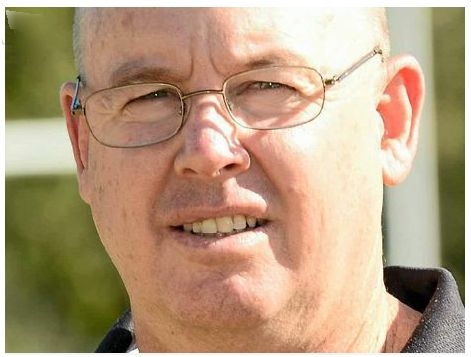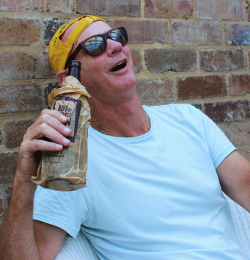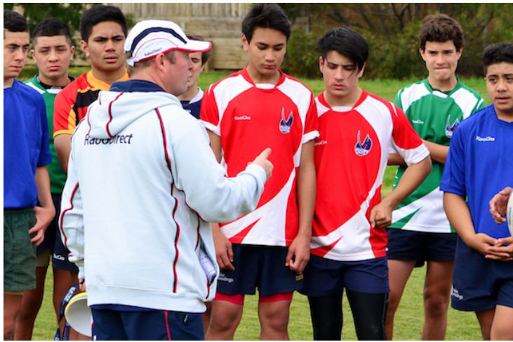The first new competition of 2014 will be the Junior Gold Cup [JGC] and it will be bigger than Ben-Hur: the ARU will be coordinating 120 games over five weeks, plus finals.
Good hustle ARU !!
Junior Gold squads have been around for two years already, in 24 different locations in Australia. They have never had a tournament before, but now they do.
Most of the teams involved in the JGC were selected in trials by the end of October and have been training since November. Starting in February 2014, 24 teams of Under 15 boys and the same number of teams of Under 17 boys will be involved in the JGC.

Ten of the squads from each age group are from Queensland (with four from Brisbane) and ten are from NSW (with four from Sydney). The other four squads are from Western Australia, South Australia, Victoria and the ACT.
The initiative of the JGC has been well received from different quarters. Steve Anderson, director of rugby of the Central Queensland Rugby Union said it it would boost rugby in the region.
It’s crucial for not only the QRU and ARU, but it provides a pathway for players and coaches to the top.
It’s certainly a screening tool for the ARU; they’re trying to get the best young players to come to the surface.
[one_half last=”no”]
The 24 teams will compete in either the Northern or the Southern Conference, which have two pools of six in each (see table on the right). Each team will play against their five other pool opponents.
In brief: all but one of the NSW teams are in the Southern Conference, together with teams from Victoria, South Australia and the ACT. The Northern Conference comprises the ten Queensland teams, Western Australia and the North Coast team from NSW.[/one_half]
[/one_half]
Pool games start on 14th February 2014 when the two Brisbane Yellow teams play the Gold Coast teams as curtain raisers to the Queensland Reds v. Melbourne Rebels trial match, and will finish on 23rd March. The leaders of each pool will play off to see who is the Conference champion, and the two winners will play off for the Junior Gold Cup on 5th April 2014.
All the boys will want their team to win the competition, but the program is designed for long term development of players and is not all about the competition element.
There will be no merit teams this year; however, the best Under 15 and Under 17 players will be included in a National Talent Squad and in state representative teams supported by the ARU.
Under 15 teams will play on on the same day and at the same location as their Under 17 counterparts. (An early table of all 60 game days can be seen here, but there could be changes).
Western Australia has a tough series and will play their five games on tour over six days. It’s not much better for South Australia which has one home match but plays its other four on tour over five days. Victoria has two home games but their three away matches will be played on tour on consecutive days.

It just as well each team can have up to 30 players in its squad.
The competition schedule is not fair, but in a period of pool games lasting only five weeks, and having the constraints of the school year, using tours to the east coast is probably the only way to manage a competition which has three states distant from where 20 of the 24 teams are.
Pity the poor ARU logistics guy organising 120 pool matches in five weeks (though two are played on the same ground on any game day there). He may need a few long-necks to keep sane.
How are the preparations going?
The selection process was patchy in the cities. Brisbane boys were invited to trial which meant that unknown players or late bloomers didn’t get a shot.
But at least that streamlined the selection process compared to the situation in Sydney. Players could apply to trial and they got a cast of hundreds, but parents thought they did as fair a job as they could.
There would have been other selection issues in other centres, but expect these to be bedded down in future years.
There has been some good quality coaches recruited, such as Lachlan Fear who has been head coach at Gordon and Eastern Suburbs in Sydney, but the overall quality of coaching can’t be assessed yet.
How will the teams from outside of Brisbane and Sydney fare?
If a lot of private schools players from the two big rugby cities are discouraged from participating, the “outside” teams in the Under 17 age group should perform well. But the four Under 15 sides in Sydney and Brisbane should be formidable opponents because the younger age group is better represented in clubland in the eastern states.

Regardless, lads from either age group outside of Sydney and Brisbane will relish the tough competition they will get that they wouldn’t experience locally in an Under 15 or Under 17 year.
And wherever a boy comes from there is nothing quite like a national competition for selectors to assess boys better for Schools Under 16 or Open representative teams the following year, and pencil them in.
Here are some links to the squad lists of Melbourne, Brisbane and Sydney.
For extra credit click on the arrow for Page 2 — the problems of teenage club players in the big cities and how the Junior Gold Cup concept could help.
We are a fan run website, we appreciate your support.
💬 Have you got a news article suggestion? Submit a story and have your say
👀 Follow us on Facebook, Instagram and X.com
🎵 Listen to our Podcasts on Spotify and iTunes
🎥 Watch our Podcasts on YouTube



